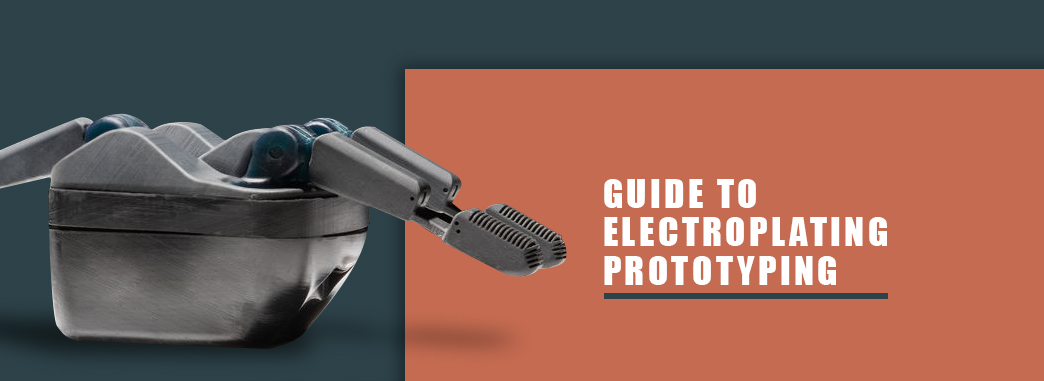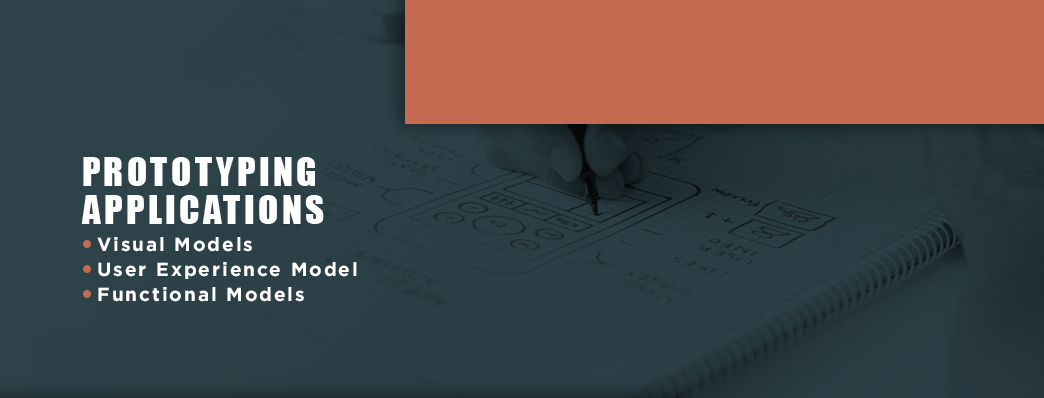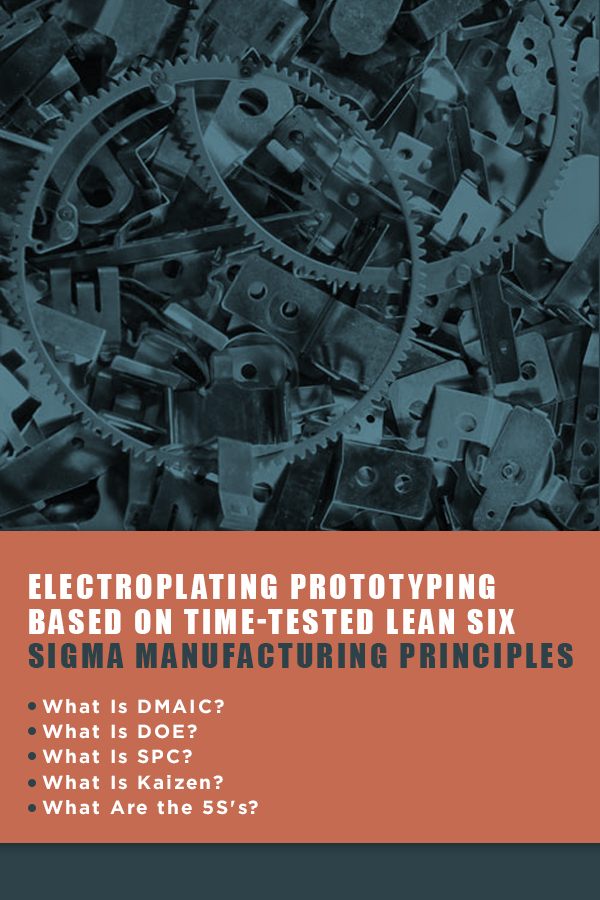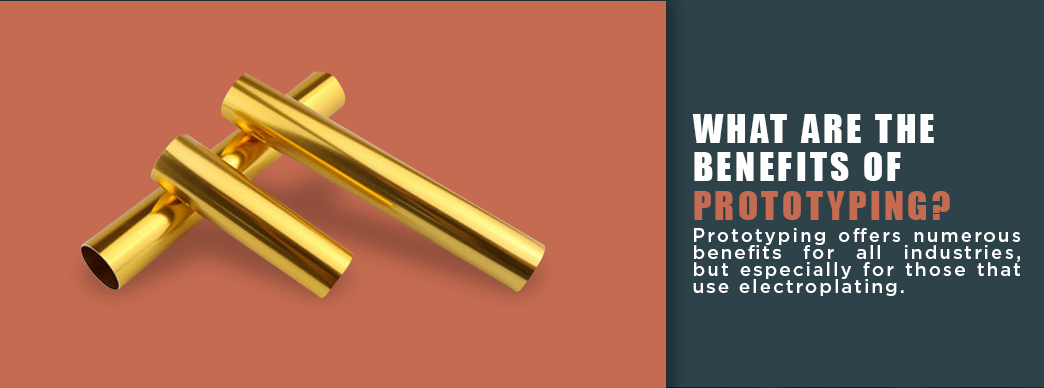
Guide to Electroplating Prototyping
Before you begin a large project, you may need a smaller model or prototype. In electroplating, prototypes allow you to prove your design and materials will work. Creating prototypes is a crucial step in any manufacturing process, especially for electroplated projects.
QUICK LINKS
The Purpose of Prototyping | Prototyping Applications
Industries That Use Prototypes | Examples of Prototypes?
Electroplating Prototyping | What Are the Benefits of Prototyping??
Get Started on Your Electroplating Project With a Free Quote From SPC
The Purpose of Prototyping
To avoid wasting money on large-scale manufacturing of proprietary or experimental designs, you need to see if it is feasible. A prototype creates a smaller version of your plan to test how workable the materials and design are. Without a model, you could find yourself wasting money on manufacturing a product that has a design flaw. Creating a prototype is so critical that it is often part of the initial design phase for any project.
A prototype for electroplating development performs the same duties as any other model. It ensures the electroplating material and substrate will work well with each other and with the contours of the figure. By electroplating a small model, you can uncover errors in the design that you would otherwise miss until the primary production phase.
Testing the long-term durability of your electroplating material is another reason to create a model. You can see how long the plating material adheres onto the substrate. If you value strength in your project, this test using a prototype will help you make a better choice of plating material and substrate.
Since models cost less to make than production designs, you can use them for testing variations of design and materials. When creating new products, testing becomes even more critical to get the best combination of shape and materials.
Request a free quote
For Prototyping
Prototyping Applications

Applications for design models include everything from testing the aesthetics to functionality. Most companies concern themselves most with how well the finished product will work in realistic situations and focus on functional models when choosing plating materials and prototyping substrates.
You have different types of prototypes from which to choose. Their purposes depend on their type — visual, user experience or functional.
1. Visual Models
Visual models let you see if the finished design has the desired appearance for advertisements or trade shows. Some use these models in promotional material to obtain funding for the finished product.
2. User Experience Model
Some aspects of design don't need to be in place for a user to test the design. User experience models help designers to see how consumers would react to the product. Like a movie preview that viewers can provide feedback for, a user experience prototype gives the company a chance to make last-minute changes before putting the finalized design into production.
3. Functional Models
Functional prototypes are working models that look and perform the same as the finished product. To get the most from the testing process, you will need to create at least one functional prototype. If you need to experiment with a variety of materials or design styles, make multiple working models.
Sometimes, you will need a functional prototype to test whether the base materials work well with the plating and how strong the results will be. Vigorous testing of a model of a product that will be subject to harsh conditions allows changes to the materials or designs at a lower cost than changing the production model.
Functional models used will have a variety of applications in the final product. For instance, you may need prototypes of parts that require testing or components which you want to continue to research.
Other projects that may benefit from electroplated prototypes are those where the weight of the model does not matter as much as the exterior. By choosing a lightweight base with a metal finish, testers can evaluate the performance of the surface without the cost of a solid metal object.
At SPC, we put plated objects through a barrage of tests to ensure the plating and substrate adhere properly and allow the model to perform as necessary. Some of our tests include the following:
- File test: We saw off a portion of the plated object to examine the junction of the substrate and plating for proper adhesion.
- Knife test: As the name implies, we attempt to peel off the plating with a knife to test adhesion and durability.
- Grid test: By scoring a grid pattern into the plating, we can test if the surface remains intact.
- Impact test: Hitting the object with a blunt tool should not dislodge the plating.
- Heat-quench test: This test looks at how temperature extremes from hot to cold affect the plating. Regardless of how fast the material cools, the plating should stay in place.
Industries That Use Prototypes
Multiple industries benefit from electroplating, and these sectors also find prototypes help in their design processes. By thoroughly vetting a design with a model first, these groups prove the feasibility of their model.
- Automotive: The automotive industry requires electronic and mechanical devices that will operate in extreme temperatures. Rust resistance is another frequent use of electroplating in the automotive industry. To ensure the plating properly prevents corrosion, though, a prototype can help.
- Oil and gas: Testing substrates and plating materials is crucial to ensure the quality of parts that may require use on off-shore oil rigs or in refineries.
- Military: Lives rest on the quality of the tools and weapons the military uses. Thorough testing of any materials with plating ensures failure won't happen at the most critical times.
- Firearms: Plating onto firearms extends the life of the guns, but without the right combination of plating, base and process, the material could fail. Don't risk a weapon to corrosion that could compromise its operation. Testing the base and plating will help prevent failure.
- Medical: In medicine, a flaking plating material could harm a patient. Testing the plating process and the materials used with a prototype ensures the tools that medical professionals use perform at their best.
- Aerospace: Heat, wind, rain and cold can all affect the longevity and durability of parts used for the aerospace industry. Prototype testing prevents failure during use by testing before production.
Examples of Prototypes
Prototypes appear in multiple industries, but a more specific instance of using these models occurs in auto racing. Formula One teams that design components for vehicles that travel hundreds of miles per hour test electroplated prototypes in wind tunnels. Though the teams may not use the exact test materials on their cars, the electroplated models perform similarly to the carbon fibers used in the vehicles' construction.
Another example of electroplated parts is those used on the International Space Station (ISS). These parts needed to withstand the cold of space and the heat of the atmosphere. Plating ensured the components used on the ISS were non-flammable since a fire could prove deadly.
While these are only a couple of examples of prototypes and electroplating uses, how we create and test the models is essential to the quality of the prototype and the finished product. We ensure the high quality of everything we create, including prototypes, using Lean Six Sigma manufacturing principles.
Electroplating Prototyping Based on Time-Tested Lean Six Sigma Manufacturing Principles

The Six Sigma approach strives to improve operations through identifying sources of defects, quantifying data and controlling or eliminating production errors. Lean Six Sigma practices slim down the Six Sigma process to ensure quality with the highest efficiency. By following a rigorous data collection and analysis method to create optimized results, we can consistently offer higher quality from our products while improving on designs.
Lean manufacturing principles allow us to cut out the waste and maximize quality in each step of the electroplating process. To do so, we employ the DMAIC model, which also incorporates DOE, SPC, Kaizen and 5S in the process.
1. What Is DMAIC?
The DMAIC model consists of five parts, which differ slightly depending on whether the process uses Six Sigma or Lean Six Sigma.
- Define: Defining means both creating both the performance standards and objectives. This step gives designers an exact way to know whether they reached their goals.
- Measure: Measuring looks at the practical problem and takes empirical data to use during the next phases.
- Analyze: Looking at the statistical problems, you determine the next course of action.
- Improve: This phase is when you will decide how to improve the product using the information garnered from the previous steps.
- Control: After looking over the data and statistics, users reach a practical solution to the problem through carefully guided DMAIC strategies. During this phase in Six Sigma, you use SPC, whereas in Lean Six Sigma, you use Kaizen.
2. What Is DOE?
DOE represents the design of the experiment. Like other aspects of Six Sigma, DOE uses data to evaluate how factors influence both the outcome and the process. In trials, multiple variables can make identifying a cause and effect relationship difficult. DOE helps researchers to narrow down the options when more than one factor could cause a change. For instance, how do the dimensions and outer material affect the weather resistance of a part?
When problem-solving, researchers use DOE to help in four areas. By applying the carefully delineated process of DOE to a problem in one of these areas, researchers can identify factors that influence the outcome.
- Comparing: Comparison looks at how changing a factor affects the outcome. This method compares the original results to what happens after altering just one variable.
- Screening: Screening gives the researcher a chance to evaluate all factors and rank them based on how much influence they have on the final result.
- Modeling: Modeling requires a researcher to create a mathematical model to illustrate the input and output of a situation.
- Optimizing: Optimizing is the facet of DOE most influential in creating prototypes. This area decides how to best achieve optimized results by changing various factors.
3. What Is SPC?
SPC stands for statistical process control. This system looks at the input variables and how they affect the process. Researchers carefully evaluate the variables of a project using up to 14 tools. These tools are broken down into two parts of seven each — quality control tools and supplemental tools.
Quality Control Tools
These are the quality control tools for SPC:
- Diagram Showing Cause and Effect
- Defect Concentration Diagram
- Control Chart
- Histogram
- Pareto Diagram (Bar Graph)
- Scatter Analysis
- Stratification
Supplemental Tools
Here are the supplemental tools:
- Data Stratification
- Maps of Defects
- Event Logs
- Flowcharts of Process
- Progress Centers
- Randomization
- Determine Sample Size
4. What Is Kaizen?
Kaizen is a means of continuous improvement within a company, both through philosophy and action. Actions bring together workers to seek contributions from all to make specific improvements. These acts typically have four steps, giving them the acronym PDCA — plan, do, check and act.
- Plan: During planning, you set your goals and make predictions.
- Do: This stage happens when workers run an experiment.
- Check: Check means workers evaluate the results from the experiment to see which improvements they must make.
- Act: Acting on the necessary improvements brings change to the project.
The philosophy side of Kaizen strives to unify workers to a common goal of bettering the company. Through regular action plans in the Kaizen model, workers realize they are valuable contributors to the company. When workers feel their ideas matter, a culture of cohesiveness blossoms.
5. What Are the 5S's?
The 5S's dictate the organization of the physical area for maximum performance and are a staple of lean practices. The original 5S's were Japanese words, but these English translations suffice:
- Sort: Remove tools you don't need for a project to clear the workspace.
- Straighten: Make the work area neat. Place the tools so they are within easy reach.
- Shine: Clean the work area.
- Standardize: Keep the workspace in pristine condition daily to maximize operations.
- Sustain: Continue to follow the 5S steps for every project.
By combining these aspects of Six Sigma at Sharretts Plating, we can reduce errors in our processes and improve our quality at every step of the projects we work on for our clients.
What Are the Benefits of Prototyping?

Prototyping offers numerous benefits for all industries, but especially for those that use electroplating. Advantages of models include both practical and financial rewards. Because this testing phase identifies problems, you will likely have multiple prototypes created until reaching a finalized design. This iterative process ensures you have thoroughly vetted the finished product.
- Identify flaws: By using a model, you can finalize the design of a product by finding and fixing flaws before production begins.
- Get feedback: User experience models give you the opportunity to test your product with end users and get feedback from them. Collecting feedback lets you see outsider perspectives of the product and how users respond to the design.
- Acquire funding: Presenting a working model to investors will make them more likely to want to invest money in the project.
- Estimate costs: Through building a prototype, you can estimate the costs of materials and manufacturing the final product.
- Test the design: Design testing in harsh conditions will allow you to uncover potential flaws in the materials or design used. For instance, a coating material may stand up well during light use, but if the product encounters harsher conditions that some users may put it through, the coating rubs off. Identifying this during the testing phase is better than having the user find the problem.
- Choose machinery: Is 3D printing or CNC machining a better option for creating the final design? This decision is one of many machinery questions you will answer during the model design and testing phase.
- Finalize product: After completing testing, you should have a finalized design to send to production that balances durability, longevity, cost and user requirements.
Companies may find that not taking the time to refine their designs through prototyping could have a detrimental effect on production. With the chance for loss so great and the number of benefits so high, creating models of a design should be a required part of any project development.
Get Started on Your Electroplating Project With a Free Quote From SPC
Your project should start with a prototype to give you a real version of what you want the finished part to look like. Building a prototype ensures you get what you wish before major production or electroplating starts. Let us at SPC take care of the prototyping step and the others in your plating project. Contact us for a free quote for consultation on any part of the process or the entire job from pre-preparation to the finishing.
Contact SPC for More Information About Electroplating Prototyping
For nearly 90 years, SPC has been developing cost-effective metal finishing solutions for companies across a wide range of industries. With hundreds of years of combined experience to draw upon, our proven electroplating prototyping process can help you achieve your specific metal finishing goals. Contact us today to learn more about the advantages of electroplating prototyping!
LEARN WHAT OUR MANY SATISFIED CUSTOMERS HAVE TO SAY ABOUT Us
"I would like to thank you for the help you have provided us in developing an electroless nickel plating technique on an unusual substrate. The sample platings you provided show that we should be able to reach our goals. I especially appreciate your willingness to take on an unusual job, with the uncertainties that that entails...We are looking forward to working with you in the future on our plating needs."
– Robert K.




